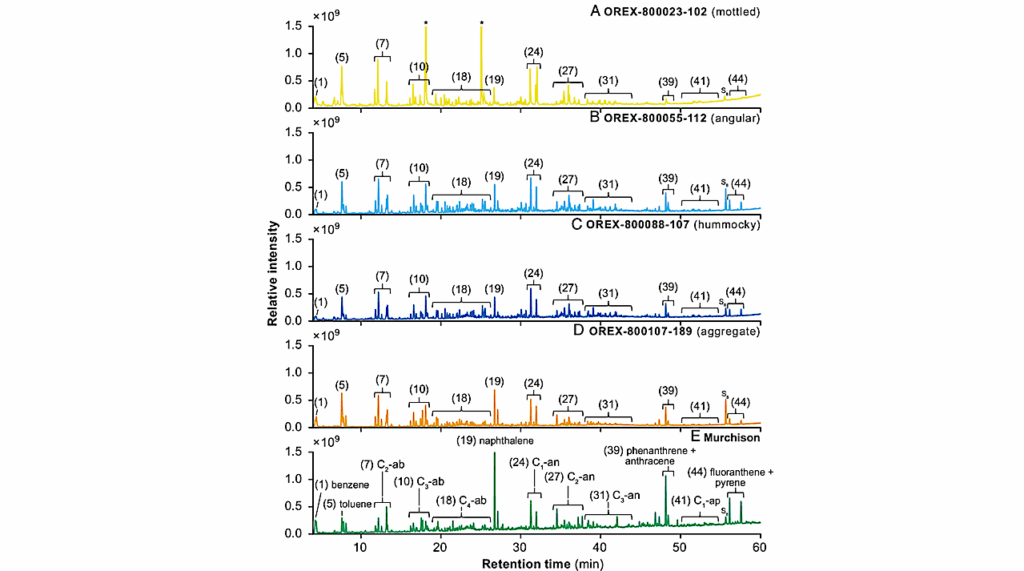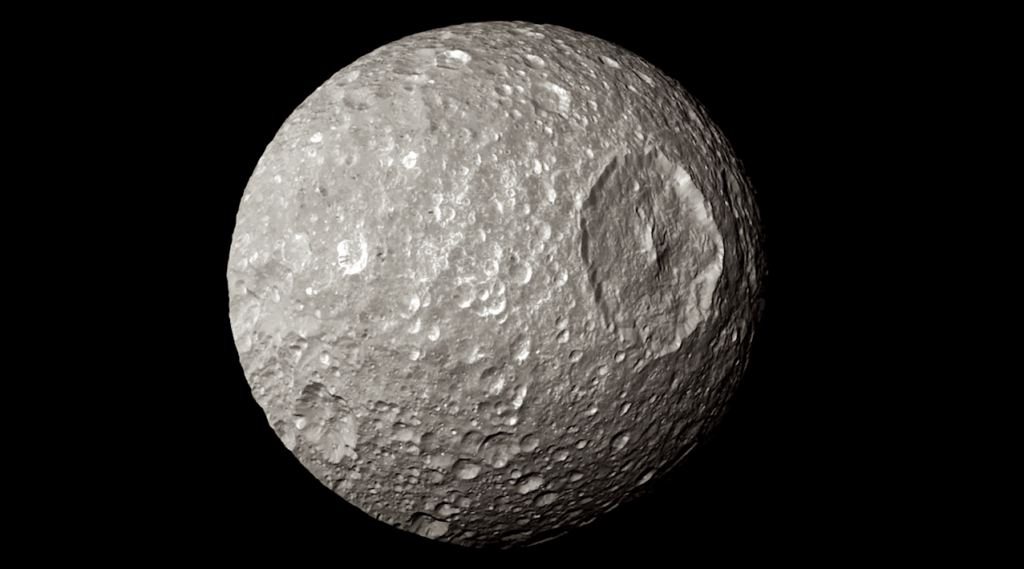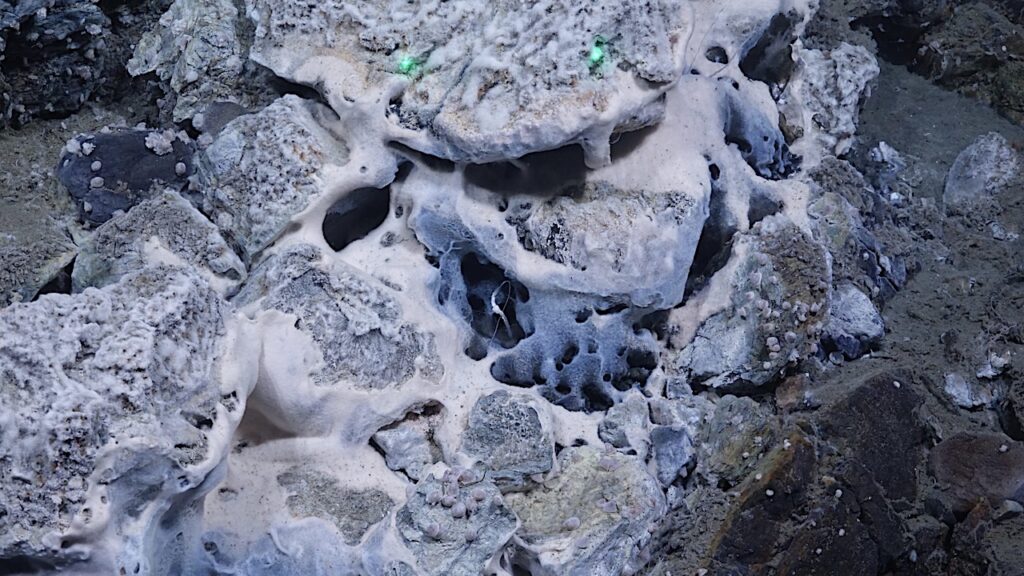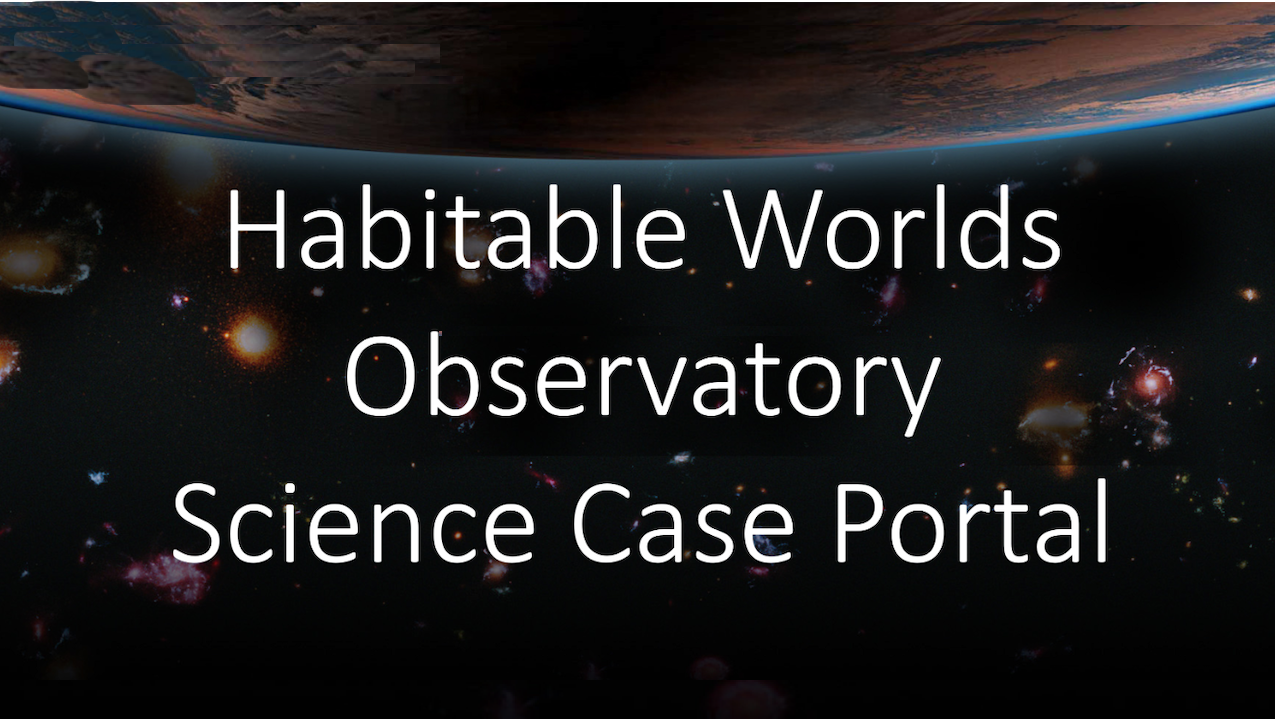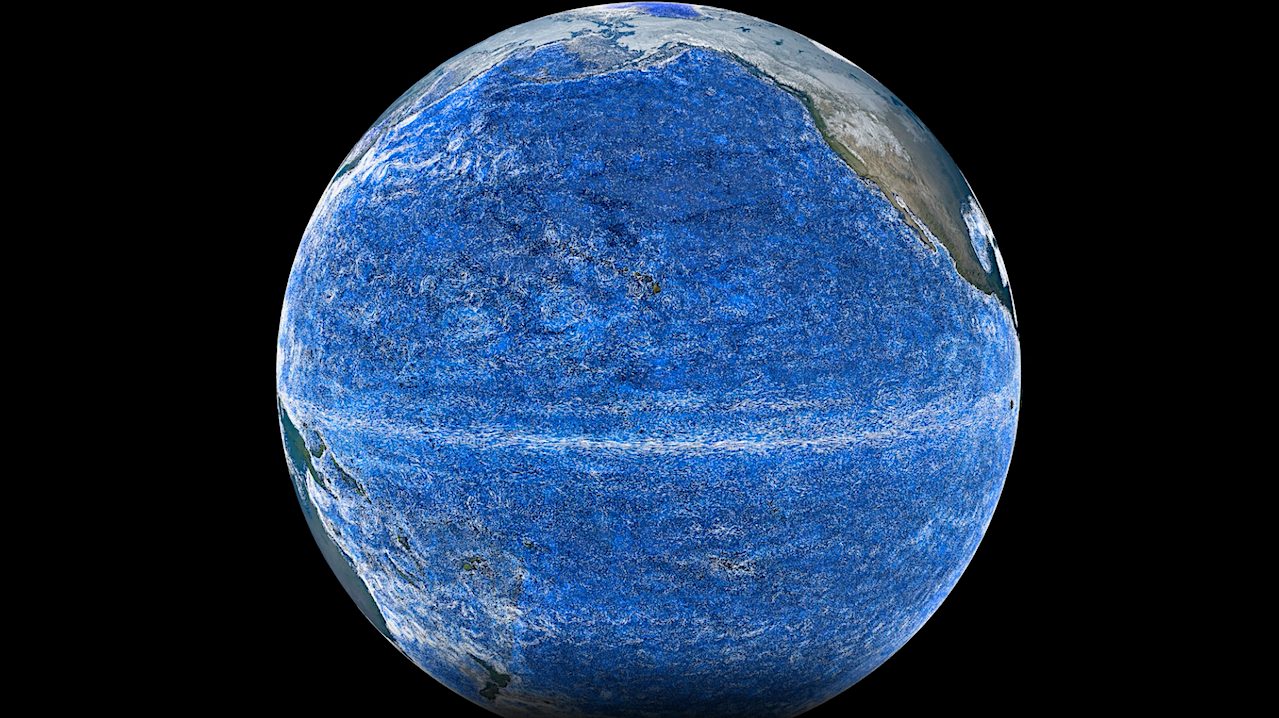Now Reading: The Source Of Hydrogen In Earth’s Building Blocks
-
01
The Source Of Hydrogen In Earth’s Building Blocks
The Source Of Hydrogen In Earth’s Building Blocks
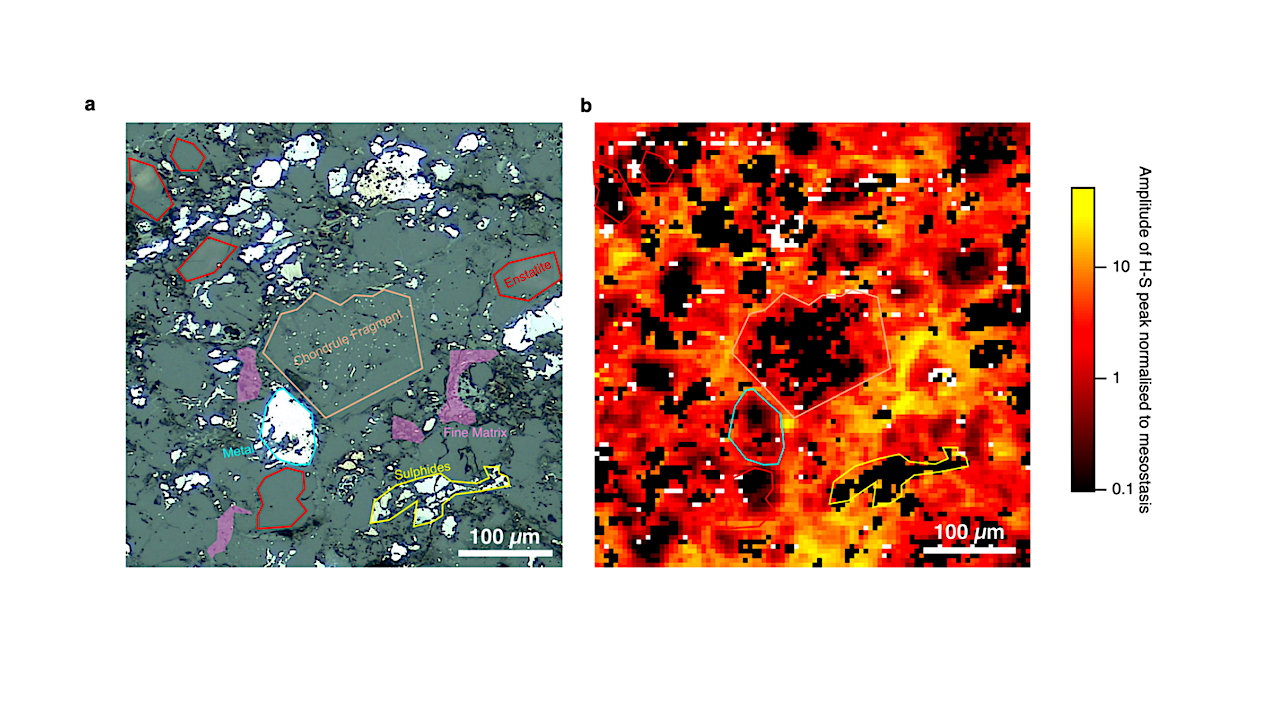

Optical microscopy image of the clastic matrix region in LAR 12252 that was studied using S-XANES. Notable phases include enstatite (examples outlined in red), sulphides (example outlined in yellow), a small chondrule fragment (outlined in orange), and fine matrix (examples highlighted in pink). b Corresponding map calculated from the S-XANES spectra of the region shown in a, showing the amplitude of the H-S peak at each point normalised to the average amplitude of point spectra measured from chondrule mesostasis (Fig. S8). Black pixels correspond to points where the SXANES spectra that did not contain a resolvable H-S peak. White pixels correspond to points where the S-XANES spectra could not be fitted due to their quality or noise in the spectra. Some grain outlines have been transferred onto Fig 2b to allow for comparison of the two figures. — astro-ph.EP
Despite being pivotal to the habitability of our planet, the process by which Earth gained its present-day hydrogen budget is unclear.
Due to their isotopic similarity to terrestrial rocks across a range of elements, the meteorite group that is thought to best represent Earth’s building blocks is the enstatite chondrites (ECs). Because of ECs’ nominally anhydrous mineralogy, these building blocks have long been presumed to have supplied negligible hydrogen to the proto-Earth. However, recent bulk compositional measurements suggest that ECs may unexpectedly contain enough hydrogen to readily explain Earth’s present-day water abundance.
Together, these contradictory findings mean the contribution of ECs to Earth’s hydrogen budget is currently unclear. As such, it is uncertain whether appreciable hydrogen is a systematic outcome of Earth’s formation. Here, we explore the amount of hydrogen in ECs as well as the phase that may carry this element using sulfur X-ray absorption near edge structure (S-XANES) spectroscopy.
We find that hydrogen bonded to sulfur is prevalent throughout the meteorite, with fine matrix containing on average almost 10 times more H-S than chondrule mesostasis. Moreover, the concentration of the H-S bond is linked to the abundance of micrometre-scale pyrrhotite (Fe1-xS, 0<x<0.125). This sulfide can sacrificially catalyse a reaction with H2 from the disk at high temperatures to create H2S, which could be dissolved in adjoining molten silicate-rich material. Upon rapid cooling, this assemblage would form pyrrhotite encased in submicron silicate-rich glass that carries trapped H2S.
These findings indicate that hydrogen is present in ECs in higher concentrations than previously considered and could suggest that this element may have a systematic, rather than stochastic, origin on our planet.
Thomas J Barrett (1), James F. J. Bryson (1), Kalotina Geraki (2) ((1) University of Oxford, Department of Earth Sciences, (2) Diamond Light Source)
Comments: 23 pages, 12 figures
Subjects: Earth and Planetary Astrophysics (astro-ph.EP)
Cite as: arXiv:2406.13637 [astro-ph.EP] (or arXiv:2406.13637v3 [astro-ph.EP] for this version)
https://doi.org/10.48550/arXiv.2406.13637
Focus to learn more
Related DOI:
https://doi.org/10.1016/j.icarus.2025.116588
Focus to learn more
Submission history
From: Thomas Barrett
[v1] Wed, 19 Jun 2024 15:32:02 UTC (4,138 KB)
[v2] Wed, 27 Nov 2024 17:12:27 UTC (3,744 KB)
[v3] Fri, 23 May 2025 19:22:50 UTC (3,767 KB)
https://arxiv.org/abs/2406.13637
Astrobiology,
Stay Informed With the Latest & Most Important News
Previous Post
Next Post
-
 012024 in Review: Highlights from NASA in Silicon Valley
012024 in Review: Highlights from NASA in Silicon Valley -
 02Panasonic Leica Summilux DG 15mm f/1.7 ASPH review
02Panasonic Leica Summilux DG 15mm f/1.7 ASPH review -
 03How New NASA, India Earth Satellite NISAR Will See Earth
03How New NASA, India Earth Satellite NISAR Will See Earth -
 04And Thus Begins A New Year For Life On Earth
04And Thus Begins A New Year For Life On Earth -
 05Astronomy Activation Ambassadors: A New Era
05Astronomy Activation Ambassadors: A New Era -
06SpaceX launch surge helps set new global launch record in 2024
-
 07Space Force plans new ‘Futures Command’ amid pressure to speed up modernization
07Space Force plans new ‘Futures Command’ amid pressure to speed up modernization












